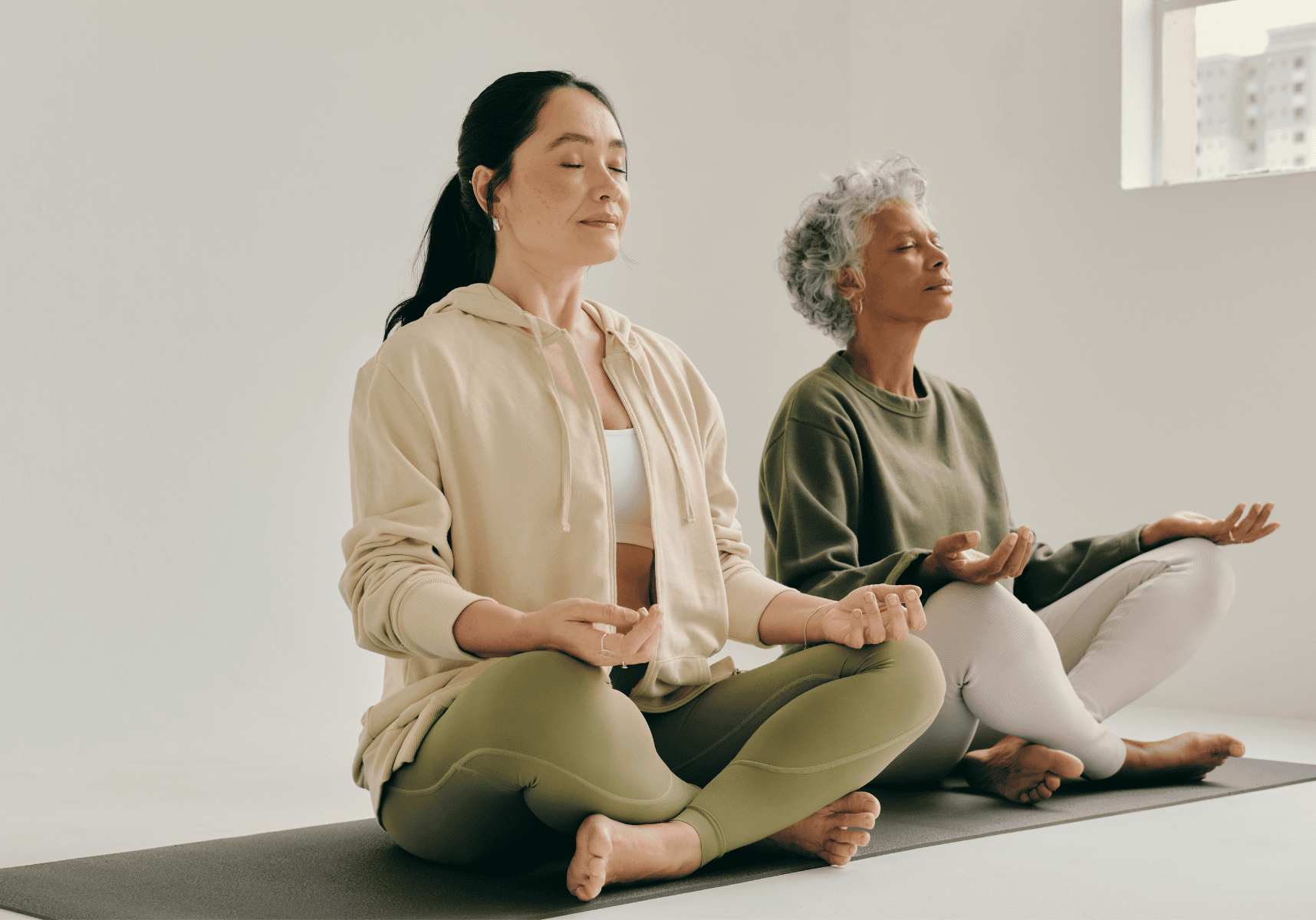
Can yoga alleviate chronic pain?
We know that yoga can be beneficial for increasing flexibility, improving strength and helping us to be more mindful, but what about diminishing or even alleviating chronic pain?
Reading time: 3 minutes
The National Institute for Health & Care Excellence (NICE) estimates that between 1/3 and 1/2 of the population of the United Kingdom experience chronic pain, or pain that doesn’t subside after 3 weeks. That’s just under 28 million people whose pain prevents them from holding a job, maintaining hygiene, exercising and engaging with others.
But first, what is pain? Pain is a complex phenomenon with various causes. On a physical level, when your tissues experience extreme changes in temperature, pressure, or chemicals, they send signals to your brain. Your brain interprets those signals, decides if the input poses a true threat, and then issues a response. The key to this process is in the interpretation of those signals.
The interpretation of input from your body happens both consciously and subconsciously, and it’s quite subjective. For instance, an experienced weightlifter might identify the burn of their last repetition as a positive thing, while an inexperienced weightlifter might identify the burn as extremely painful.
The input to the system is the same for both individuals, but their appraisal of what they feel will depend on their prior experience, knowledge, thoughts, mood, and their assessment of their own capacity to handle the pain.
On a more subconscious level, the state of your nervous system also influences how your brain interprets input from your body. Our nervous system is brilliantly designed to keep us alert and reactive when we need to be, but also able to rest and digest when appropriate. Ideally there is a nice balance between the two states and you can shift easily from one to the other as needed.
Unfortunately, a lot of us get stuck in a heightened state of alertness, making us more prone to stress, anxiety, & insomnia. Interestingly, in this state, you’re also more likely to interpret sensations as painful. If you’re stressed out, sleep-deprived, and haven’t taken time to fill your own cup, you might experience more pain.
Yoga for Chronic Pain: Can Yoga Alleviate Pain?
Enter yoga.
You Time. For many of us, our yoga class is the only time we can step away from the demands of work & family and truly take some time for ourselves. The proverbial filling of your own cup improves mood, reduces stress and ultimately lessens our likelihood to interpret sensation as painful (4).
The role of the breath. Most yoga classes include breath awareness or breath exercises called Pranayama. The act of slowing and deepening your breath can have a profound impact on your nervous system. Try it the next time you're late and stuck in traffic. When we slow and deepen the breath, we’re effectively sending a signal to our nervous system to slow down and relax. Once again, when we can shift our nervous system, we can influence our perception of pain.
Don’t forget mindfulness. Yoga and meditation train us to pay attention to our present moment experience without judgment. When we learn to identify emotions and thoughts, we get better at avoiding reactivity, catastrophizing or dwelling on the past. Yoga and meditation allow us to modulate our emotions effectively decreasing our levels of stress and positively influencing our interpretation of stimuli as painful.
Pain is a complex phenomenon with a myriad of causes. Regardless of its source, our experience of pain is individualized, subjective and influenced by our nervous system. Fortunately we can use mindful movement, meditation, and breath to shift our nervous system from alertness to a state of restful attention. When we can shift our nervous system, we also shift our experience of pain, for the better. Yet another benefit of the glorious gift of yoga.
Lynne Olsen is a Yoga Medicine Therapeutic Specialist and Personal Trainer based out of Santa Fe, New Mexico. Lynne specializes in using her knowledge of anatomy & asana to support students in overcoming injuries, compensatory patterns, and pain. She offers group and one-on-one sessions. She can be reached at Lynneyogafitness.com





